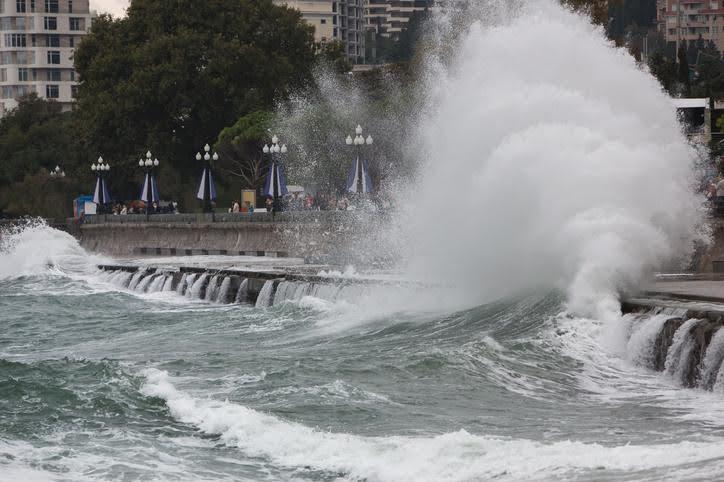What Is Storm Surge?
September 3, 2024

Storm surge is a rise in seawater level caused by a storm, typically a hurricane or tropical cyclone. It occurs when strong winds from the storm push water toward the shore, leading to higher-than-normal sea levels. This can result in significant flooding, especially in coastal areas.
We’ll explain what causes storm surge, how to prepare for it, and the impact it can have on coastal areas.
Causes of Storm Surges
A few factors usually determine how bad a storm surge is going to be.
Strong Winds: The main driver of a storm surge is the strong, sustained winds generated by a hurricane or tropical cyclone.
Pressure Drop: Hurricanes and tropical cyclones are characterized by very low atmospheric pressure at their center, or eye. This low pressure allows the sea surface to rise slightly, contributing to the overall height of the storm surge.
Storm Size and Intensity: Larger and more intense storms generally generate higher storm surges because they can affect a broader area, pushing more water toward the coast.
Storm Path and Angle of Approach: A storm that approaches the coastline at a right angle (perpendicular) tends to push more water directly onto the shore, leading to a higher surge.
Storm Track: The path the storm takes can also influence which areas experience the highest surges, with those on the right side of the storm's eye usually facing the strongest winds and highest surges.
Shallow Water: Areas with a gently sloping continental shelf tend to experience higher storm surges because the water is pushed up more easily over shallow areas.
Coastal Shape: Bays, inlets, and river mouths can funnel water and amplify the storm surge, leading to more severe flooding in these areas.
High Tide: A storm surge that coincides with high tide can lead to even higher water levels, significantly increasing the risk of flooding. The difference between high and low tide can also affect the surge's impact, with larger tidal ranges potentially exacerbating the flooding.
Waves: Waves, particularly in conjunction with the surge, can raise the water level even further, especially in areas where waves break near the shore.
Preparing for a Storm Surge
Preparing for a storm surge is crucial, especially if you live in a coastal area prone to hurricanes or tropical storms.
Use local resources or maps from the National Hurricane Center to determine if you're in a storm surge zone and familiarize yourself with the evacuation routes in your area. Develop a family emergency plan, including communication methods, meeting points, and evacuation routes, and pack an emergency kit filled with essentials like water, medications, and first aid supplies.
Follow local authorities’ guidance on when to evacuate, and when to return home.
Check out our disaster preparedness guide for helpful tips on how you can best secure your home in advance of a storm.
Impact of Storm Surges on Coastal Areas
Storm surges can be extremely dangerous, causing extensive damage to buildings and infrastructure. They are often the deadliest aspect of a hurricane, as the sudden and powerful influx of water can lead to severe flooding far inland.
Storm surge can also cause major harm to the environment, eroding beaches and dunes and damaging wetlands, mangroves, and other coastal ecosystems that serve as important habitats for wildlife and natural barriers against storms.
The economic challenges can be severe as well. Businesses in coastal areas may face significant financial losses due to damage to property and inventory, as well as the interruption of operations. Many people may be displaced from their homes for extended periods, leading to long-term social and economic challenges for communities as they rebuild and recover.
Responding to Storm Surge Damage
While storm surge damage can be devastating, DRYmedic is here to help. Our team of professionals provides expert storm damage restoration from weather events including floods, hurricanes, and more. If your property has been damaged by storm surge, contact your local DRYmedic.